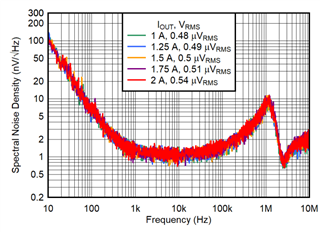Other Parts Discussed in Thread: TPS796
Part number: TPS7A96: Part Description: Ultra-Low Noise, Ultra-High PSRR, RF Voltage Regulator
Questions:

The plot shown above is taken from page 1 of the part’s datasheet. I will be performing a similar test to measure the ripple and noise power density coming out of a switcher and fed to a regulator. I would like to know how to configure my test setup for this measurement.
I heard that measuring noise power density down to 10Hz is challenging (please educate me why), and I’m concerned that this may indicate a high measurement error at 10 Hz. If this is true, how can I avoid or compensate for measurement errors?
What test instruments were used when the noise data in the picture was taken? Additionally, do you have any suggestions for test equipment for ultra-low noise (nV/srHz) from 10Hz to 20MHz (or greater) measurement? How is DC blocker implemented? Is it a built-in feature of the instrument or does it require an external attachment.
Being new to this domain, I might be missing some crucial questions for a successful measurement. So, if you have any suggestions beyond the questions I have asked, please kindly share them. Thank you so much!
Ticket Number: CS2167801

